Occupational Safety Training for the Spa Industry
99,000 ₫
Note: The above price is calculated per person and may vary depending on the number of trainees participating in the course and market fluctuations. For more accurate price support, please refer to the pricing table or contact our consulting staff directly.
The Spa Occupational Safety Training course is a training program that provides Group 3 occupational safety knowledge. This course will raise awareness on how to prevent workplace accidents during work for trainees. Accordingly, the occupational safety training content closely follows Article 18 Decree 44/2016/ND-CP.
Table of Contents
Toggle1. Overview of the Spa Industry
a. What is the Spa Industry?
The spa industry is a sector within the health care and beauty service industry, focusing on providing relaxation therapies, beauty treatments, and health care services to customers. This industry includes a wide range of services, from skin care therapies, massages, saunas, steam baths, to therapeutic treatments such as acupressure, acupuncture, and even psychological therapies.
The spa industry not only helps improve external beauty but also emphasizes customers’ health and mental balance. Therefore, more and more people turn to spa services as a comprehensive and sustainable method of self-care.

b. Common Services in the Spa Industry
- Massage: One of the most popular services, including types such as Swedish massage, hot stone massage, Thai massage, aromatherapy massage, and many others. Massage helps reduce stress, improve blood circulation, and enhance overall health.
- Skin Care: Spa skin care services include facial cleansing, exfoliation, moisturizing, and anti-aging treatments. Professional skin care products and modern techniques are used to improve skin health and beauty.
- Sauna and Steam: These methods use steam or heat to cleanse pores, detoxify the body, and improve blood circulation. They are popular therapies for physical and mental relaxation.
- Hydrotherapy: A treatment using water for healing and relaxation. Hydrotherapy may include mud baths, herbal baths, and soaking in hot mineral water.
- Therapeutic Treatments: Includes therapies such as acupressure, acupuncture, and other treatments to relieve pain, improve health, and treat specific body issues.
- Manicure and Pedicure: Nail care services for hands and feet, including nail shaping, polishing, and skin care. These services not only beautify but also maintain nail and skin health.
- Psychological and Relaxation Therapies: Some spas also offer psychological therapies, yoga, meditation, and activities that reduce stress and improve mental well-being.

c. Notable Businesses in the Spa Industry
Global Notable Businesses
- Six Senses Spas:
- Six Senses Spas is renowned for luxury resorts and spas worldwide. Their therapies focus on the balance between body and mind, using natural products and modern treatment techniques.
- Mandarin Oriental Spas:
- This spa chain, part of the Mandarin Oriental hotel group, offers premium therapeutic and health care services. They are well-known for high-end massage and skin care treatments.
- ESPA:
- ESPA is a global spa brand famous for therapies using natural products and advanced treatment techniques. They collaborate with many renowned hotels and resorts to provide premium spa services.
- Banyan Tree Spas:
- Banyan Tree Spas offer an authentic relaxation experience with therapies inspired by Asian culture. They stand out with beautiful relaxation spaces and attentive customer service.
- Aman Spas:
- Aman Spas are part of the Aman resort chain, famous for comprehensive health care therapies and luxurious relaxation environments. They focus on creating a tranquil space integrated with nature.
Notable Businesses in Vietnam
- Sofitel Legend Metropole Hanoi Spa:
- The spa at Sofitel Legend Metropole Hanoi hotel is one of the most luxurious and prestigious spa locations in Hanoi. It offers skin care, massage, and high-end relaxation services.
- La Maison De L’Apothiquaire:
- One of the famous spas in Ho Chi Minh City, providing high-quality skin care and massage therapies. It is known for its classic atmosphere and natural care products.
- Anam QT Spa:
- Anam QT Spa is a reputable spa chain in Vietnam, famous for professional massage and skin care treatments. It operates in many major cities and is highly rated for service quality.
- L’Apothiquaire Spa:
- L’Apothiquaire Spa in Ho Chi Minh City is an ideal destination for those seeking relaxation and health care. It offers therapies using natural products and advanced treatment techniques.
- Fusion Maia Da Nang:
- Fusion Maia Da Nang is a well-known resort and spa in Da Nang, offering comprehensive health and beauty care therapies. It is distinguished by modern design and beautiful relaxation spaces.

d. Specific Jobs in the Spa Industry
The spa industry offers a variety of jobs, each playing an important role in providing health and beauty care services to customers. Below are some specific jobs in the spa industry:
1. Massage Therapist
- Massage therapists perform various massage therapies to help customers relax, reduce stress and pain. They need knowledge of anatomy and professional massage skills.
2. Esthetician
- Estheticians perform facial care, exfoliation, acne treatment, and anti-aging therapies. They also advise customers on home skin care and suitable skin care products.
3. Nail Technician
- Nail technicians provide manicure, pedicure, nail polishing, and nail care therapies. They need professional nail care skills and knowledge about nail care products.
4. Spa Attendant (Sauna and Hydrotherapy Specialist)
- Spa attendants assist customers in using sauna, steam, and hydrotherapy services. They also ensure these areas are clean and safe for customers.
5. Spa Manager
- The spa manager is responsible for overseeing the entire spa operation, including managing staff, planning services, managing finances, and ensuring service quality. They also supervise staff training and maintain a positive work environment.
6. Spa Receptionist
- Spa receptionists welcome customers, manage appointments, handle requests, and process payments. They also provide information about spa services and advise customers.
7. Reflexologist
- Reflexologists perform therapies that stimulate points on the feet, hands, or ears to improve overall health and reduce pain.
8. Aromatherapist
- Aromatherapists use natural essential oils to perform massage and health care therapies. They also advise customers on the benefits of different essential oils and how to use them.
9. Yoga and Meditation Instructor
- Yoga and meditation instructors lead yoga and meditation classes to help customers improve their mental and physical health. They need deep knowledge of exercise methods and professional teaching skills.
10. Nutritionist
- Spa nutritionists advise customers on proper diet and nutrition to improve health and beauty. They may provide personalized meal plans based on individual customer needs.
These jobs all contribute to delivering a perfect spa experience, helping customers feel relaxed, rejuvenated, and healthier. Spa professionals need specialized knowledge, good communication skills, and a dedicated customer service spirit.
2. Overview of Occupational Safety Training Course for the Spa Industry
a. What is occupational safety training for the spa industry?
- Occupational safety training for the spa industry consists of sessions that equip workers with awareness on how to prevent occupational accidents. Accordingly, those who directly work in the spa industry belong to group 3.
- The occupational safety training course helps workers identify and avoid hazards, reducing the risks of occupational accidents during work.
REGISTER FOR OCCUPATIONAL SAFETY TRAINING SERVICE
b. Training duration
Initial occupational safety training duration
- The total training time is at least 24 hours, including testing time.
- 8 hours of theory on the system of policies and laws on occupational safety and hygiene
- 8 hours of theory on basic knowledge of occupational safety and hygiene
- 4 hours of theory on specialized training content
- 2 hours of practice on specialized training content
- 2 hours of theoretical testing at the end of the training course
The safety training center will distribute the training time into multiple sessions depending on the scheduling for employees. Usually, there are 6 training sessions over 3 days, provided the company arranges continuous learning time.
Periodic occupational safety training duration
- Before the occupational safety card expires, workers who want to renew must take the periodic occupational safety training, with periodic training time being at least 50% of the initial training time.
Explanation: the total periodic occupational safety training time is at least 12 hours, including testing time. After completing the periodic training and passing the test, workers will be reissued or extended their occupational safety card.
c. Training content
| No. | TRAINING CONTENT | TRAINING DURATION (HOURS) | |||
| Total | Including | ||||
| Theory | Practice | Test | |||
| I | System of policies and laws on occupational safety and hygiene | 8 | 8 | 0 | 0 |
| 1 | Overview of the legal normative documents system on occupational safety and hygiene. | 6 | 6 | ||
| 2 | System of standards and technical regulations on occupational safety and hygiene. | 1 | 1 | ||
| 3 | Specific regulations of state management agencies on occupational safety and hygiene when constructing new, expanding, or renovating facilities for manufacturing, using, storing, and inspecting machines, equipment, materials, and substances with strict occupational safety and hygiene requirements. | 1 | 1 | ||
| II | Basic knowledge of occupational safety and hygiene | 8 | 8 | 0 | 0 |
| 1 | Basic knowledge of hazardous and harmful factors in the workplace. | 4 | 4 | ||
| 2 | Methods to improve working conditions. | 1 | 1 | ||
| 3 | Safety culture in production and business. | 1 | 1 | ||
| 4 | Rights and obligations of employers and employees; policies and regimes on occupational safety and hygiene for employees; functions and duties of the safety network and hygiene staff. | 1 | 1 | ||
| 5 | Safety and hygiene regulations, signs and safety instructions, use of safety equipment and personal protective equipment; skills in first aid for occupational accidents, and prevention of occupational diseases. | 1 | 1 | ||
| III | Specialized training content | 6 | 4 | 2 | 0 |
| Comprehensive knowledge of types of machines, equipment, substances causing hazardous and harmful factors; risk analysis, assessment, management of occupational safety and hygiene; safe working procedures with machines, equipment, and substances with strict safety and hygiene requirements. | 6 | 4 | 2 | ||
| IV | Testing the occupational safety training content at the end of the course | 2 | 2 | 0 | 0 |
| Total | 24 | 22 | 2 | ||
See more about training contents for 6 groups
d. Occupational safety card
After completing the occupational safety training course and passing the test, workers will be issued the occupational safety card (commonly called the occupational safety certificate for group 3).
The group 3 safety card clearly shows information such as full name, date of birth, specific job and working environment. It also includes training duration, a red stamp, and signature confirming course completion.
According to the card issuance regulations stated in Clause 2 of Article 24 of Decree 44/2016/ND-CP, there are two cases:
- If the employer and employee have an employment contract, the employer must sign, stamp, and countersign the occupational safety card for the group 3 trained worker after the training from the occupational safety training unit and passing the test.
- If the worker is freelance or seasonal without an employment contract, the training unit must sign, stamp, and countersign the occupational safety card for the worker after the training and passing the test.

3. Identifying hazards for workers in the spa industry
- Musculoskeletal injuries:
- Massage technicians often work in uncomfortable postures, which may lead to back, neck, shoulder pain and other injuries due to repetitive movements.
- Risk of infection:
- Beauty treatments such as manicures and skincare can cause infection risks if personal hygiene and tool sanitation are not properly followed.
- Noise and work pressure:
- A noisy spa environment may cause stress and affect the mental health of staff.
- Exposure to chemicals:
- Manicure and skincare specialists may be exposed to chemicals during work, causing skin irritation and respiratory issues if not properly protected.
- Risk of injury from clients:
- Employees such as massage technicians may face risks of assault or abuse from clients if no safety measures are in place.
- Hazards from equipment and facilities:
- Use of massage machines, steam rooms, mineral baths, and beauty tools can be dangerous if not regularly inspected and maintained.
- Work pressure and stress:
- Especially for specialists serving many clients, work pressure and stress can negatively impact their health and mental well-being.

4. Safety Measures for Workers in the Spa Industry
- Training and Instructions: Provide comprehensive training on work skills and occupational safety for all employees, including therapists, estheticians, nail technicians, and other positions. They need guidance on the proper use of equipment and health care products.
- Personal Hygiene: Encourage and monitor employees to maintain proper personal hygiene, including frequent hand washing and wearing protective gear such as masks and gloves when necessary.
- Equipment and Workspace Hygiene: Ensure that equipment and tools are cleaned properly after each use. Workspaces such as saunas and hydrotherapy rooms should also be cleaned regularly and periodically.
- Waste Management: Handle medical and chemical waste according to procedures to prevent environmental pollution and health hazards.
- Equipment Inspection and Maintenance: Regularly inspect and maintain beauty equipment, machinery, and electrical and water systems to ensure safe use and prevent unexpected incidents.
- Chemical Safety: Use skin care products and specialized chemicals according to manufacturer instructions to ensure safety for staff and customers.
- Personal Protection and Workplace Safety: Provide protective equipment such as masks, gloves, and goggles to protect employees from health risks, including hazards from chemicals, electrical devices, and water exposure.
- Periodically conduct occupational environment monitoring at the workplace to collect and analyze harmful factors affecting workers, then adjust to reduce risks to prevent occupational diseases.
5. Benefits of Occupational Safety Training in the Spa Industry
An Toàn Nam Việt offers your enterprise the following outstanding benefits upon completing occupational safety training courses in accordance with Decree 44/2016/ND-CP on occupational safety and hygiene. Companies, factories, and enterprises can expect:
- Workers can recognize potential occupational accident hazards and take preventive measures to avoid accidents.
- Your enterprise can establish risk prevention measures in production, operation, and maintenance processes.
- Reduce costs related to occupational safety incidents.
- Uninterrupted production processes improve labor productivity and product quality.
- Ensure compliance with occupational safety laws, avoiding legal risks.
- Create prestige and professionalism in all aspects, thereby elevating your enterprise’s brand.
Nam Việt’s training courses are solutions to prevent and combat external factors affecting individuals, helping them avoid dangers that may cause injury or even death.
REGISTER FOR OCCUPATIONAL SAFETY TRAINING SERVICE
6. Customer Feedback After Completing the Training Courses
An Toàn Nam Việt has many years of experience accompanying numerous enterprises in Vietnam, especially in the southern provinces. This responsibility is extremely valuable to Nam Việt, which is why the Occupational Safety Training program is increasingly professional. The motivation for Nam Việt’s growth comes from positive feedback and constructive suggestions from enterprises. Below are some testimonials from our valued partners.
Bắc Nam E&C Investment Construction Joint Stock Company
“The first time I used An Toàn Nam Việt’s service, I was surprised by the 24/7 enthusiastic support from the consulting team. Organizing the class was quick and convenient for our company. Thank you very much for Nam Việt’s service!”
Hoa Đất Construction and Trading Joint Stock Company
“Nam Việt’s service has greatly helped us simplify occupational safety and complete safety documentation for our working process. The consulting team was enthusiastic and timely in addressing our questions. Five stars for Nam Việt.”
See more customer interviews after using An Toàn Nam Việt’s services
7. An Toàn Nam Việt’s Occupational Safety Training Capacity
An Toàn Nam Việt is a reputable and high-quality occupational safety training center in Vietnam. Our training sessions are continuously held at manufacturing plants, factories, and construction sites across all 63 provinces in Vietnam.
REGISTER FOR OCCUPATIONAL SAFETY TRAINING SERVICE
Occupational Safety Training License
- An Toàn Nam Việt has been inspected and certified by the Department of Occupational Safety under the Ministry of Labor – Invalids and Social Affairs, which certifies our eligibility to conduct occupational safety and hygiene training. This further strengthens our capability in providing occupational safety training.

Training Materials and Lectures
- Before being included in occupational safety training courses, training materials are reviewed and approved to ensure accuracy and effectiveness.
- Our instructors use standardized teaching methods developed by An Toàn Nam Việt, based on research and experience in occupational safety and hygiene training to maximize knowledge absorption for learners.
Facilities
- Controlling environmental factors in classrooms enhances teaching efficiency and knowledge retention.
- Our training facilities provide spacious classrooms meeting standards for area, lighting, and training equipment.
8. Nationwide Reputable and Quality Safety Training Center
At An Toàn Nam Việt, we prioritize professionalism and dedication in occupational safety training. For us, imparting knowledge on self-protection to workers equips them with safety tools for their livelihood, contributing to national development.
To ensure effective training, we carefully prepare every detail, from tools, teaching equipment, curriculum, materials, to sound and lighting.
Our occupational safety instructors are experts with years of experience and have conducted research on hazard identification across industries and prevention methods.
Their lectures are practical, engaging, and easy to understand for workers. This creates a comfortable learning environment and helps trainees absorb knowledge effectively. Of course, the training strictly complies with Decree 44/2016/ND-CP.
As a result, trainees learn many hazard prevention measures and how to protect themselves, applying them appropriately in their work.
Our training center proudly offers professional, reliable occupational safety training with these advantages:
- Competitive training costs while ensuring quality.
- Flexible training schedules suited to your company’s production needs.
- Fast and compliant certification issuance procedures.
- Experienced trainers with many years in the field.
- Classrooms controlled to optimize teaching efficiency and learning outcomes.
- Course materials tailored to enterprise occupational safety needs.
- An Toàn Nam Việt provides dedicated and professional support for customers promptly and accurately.

9. Additional References for Spa Industry Occupational Safety Training Materials
No comments yet

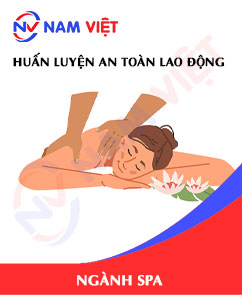
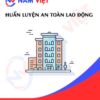
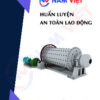





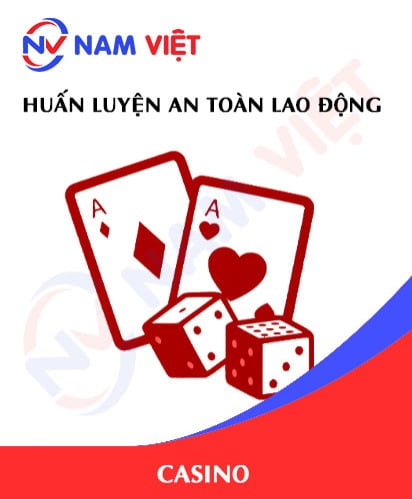
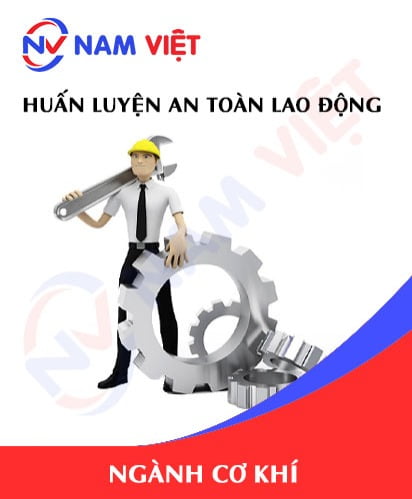

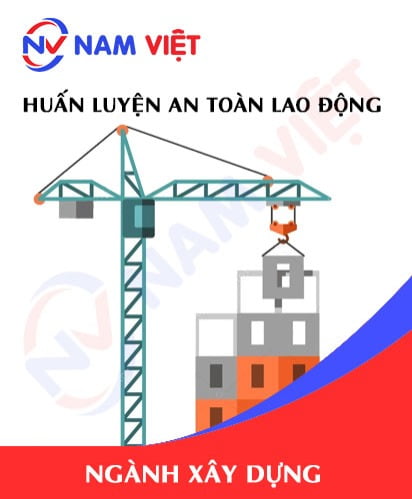
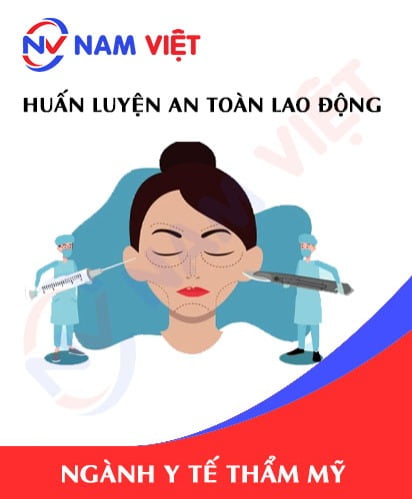
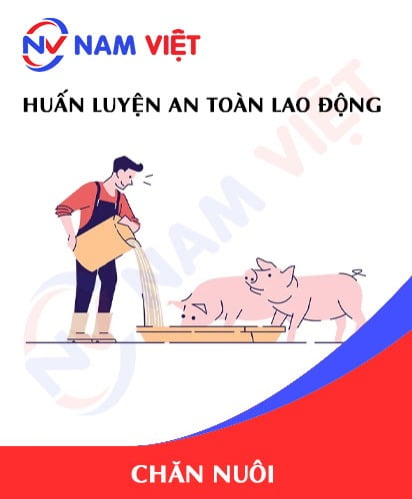
Review Occupational Safety Training for the Spa Industry
There are no reviews yet.